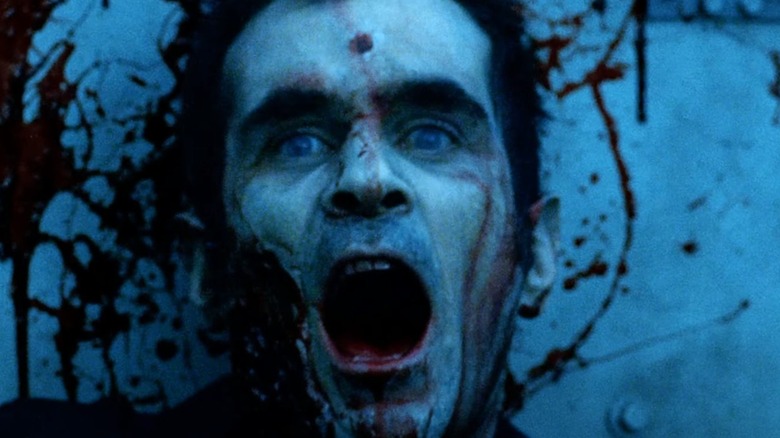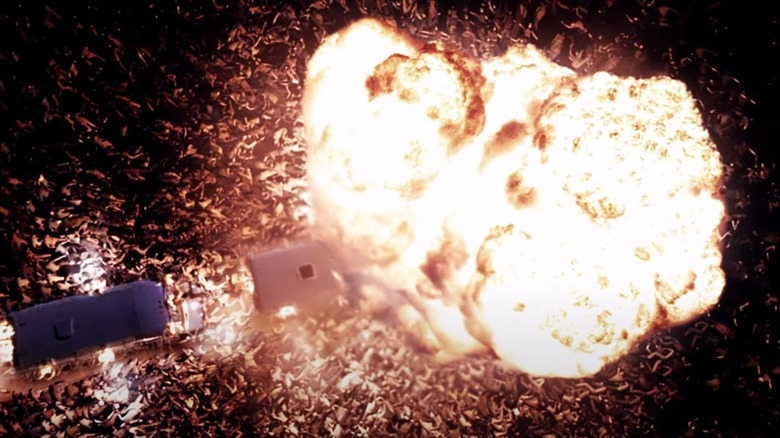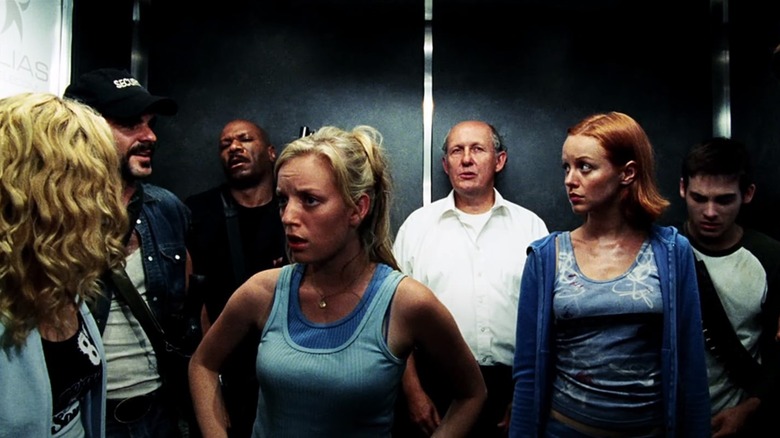Dawn Of The Dead's Ending Explained
2004's "Dawn of the Dead," against all odds, was a watershed moment in Hollywood. Beyond helping to rekindle the public's interest in hungry corpses, it saw a television commercial director named Zack Snyder taking the reigns of his first feature film, while also expanding on the perceived range of James Gunn, a screenwriter whose best-known work at the time was the live-action "Scooby-Doo" movie from 2002 where Scrappy tinkles on Sarah Michelle Gellar.
At the time, "unproven director" and "cartoon dog writer" felt like shaky ground to try and build a horror movie on, so it came as a pleasantly macabre surprise when the film's first 10 minutes gave us a speed demon undead kid tearing into a milquetoast suburban couple in the early hours of the morning, infecting the husband (Louis Ferreira) and sending the wife Ana (Sarah Polley) running for her life. Already, the message was clear: Kids will absolutely ruin your marriage.
What follows is a now-classic zombie movie scenario. Ana links up with a merry band of fellow survivors, and the group stakes their claim on a local shopping mall.
Dawn of the Dead: Corpses, killdozers, and Earth-shattering kabooms
The survivors get to know each other more personally, and everyone gets a chance to showcase their ethos. Michael (Jake Weber) seems driven by a compulsion to atone for nonspecific, divorce-inducing sins of the past. Kenneth (Ving Rhames) takes comfort in comradery while upholding a no-nonsense approach to security. Steve (Ty Burrell) is obnoxious.
Malls, as we've all learned in the years following the 1980s, are only fun for so long, and a series of events ending in nothing but death and zombie midwifery leads the gang to conclude that escape is a necessity. The remaining survivors do what the rest of us have only dreamed of doing: They turn a couple of buses into zombie slaughter wagons, with the ultimate goal of heading out on a boat and riding out the storm on an island in sunny Lake Michigan.
The course of escaping waves of the undead never did run smooth, and the group's escape plan goes sideways pretty immediately. By the time they reach the marina, only six intrepid travelers remain. That number dips slightly further when Michael reveals that he up and got bit in the commotion, and he quietly offs himself as his comrades boat-off to their happy ending.
But then the credits feature some found footage shots of the remaining survivors being unpleasantly surprised by a new horde of undead on that island they were headed to. Their ultimate fate, while screamy, is unclear.
So what did we learn here today?
What we learned from Dawn of the Dead
Here's a hot take that literally no one on the internet has ever discussed before: zombies might be a metaphor for something. George Romero, the father of the undead genre as we now know it, certainly thought that they might be. Speaking to IndieWire just a few days before his death in July of 2017, the horror pioneer stated that his shambling corpses had "always been political. It's not gore, it's not just horror," he continued. "I've always tried to put a little something in there." It's difficult to miss, looking back on his original run of "(Blank) of the Dead" pictures. "Night of the Living Dead" had painfully apt parallels to the Civil Rights movement. His 1978 follow-up oozed disdain for mindless American materialism. 2005's "Land of the Dead" didn't just lampoon wealth disparity, it also offered audiences more than a decade's worth of dramatic catharsis by allowing John Leguizamo and Dennis Hopper to work out their shared professional aggression following 1992's "Super Mario Bros."
So it shouldn't be surprising that James Gunn, at this point still a budding Hollywood screenwriter, picked up the allegory ball and ran with it in his script for 2004's "Dawn of the Dead." Even at this relatively early point in his career, Gunn was leaning hard into themes that he'd keep coming back to for more than a decade: The breakdown of the ego, the way that tragedy and disaster strip a person down to their base traits, and, most importantly, redemption. It's the sort of stuff that would make for a real arthouse flick if you cut out the part with the shuttle bus killdozers. Even if they just toned down the violence a little, either Gunn or Snyder could probably do alright for themselves making crowd-pleaser superhero movies. Here's hoping they apply themselves.


